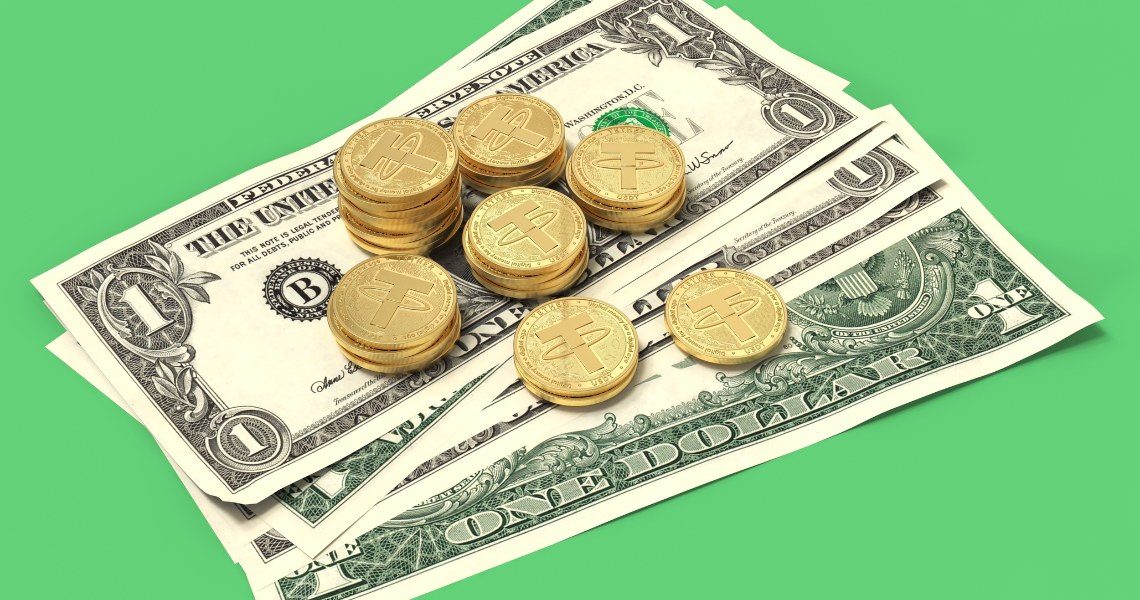A few days ago Bitfinex launched the stablecoin Tether Gold, whose price is anchored to 1 ounce of gold. For the occasion, Paolo Ardoino, CTO of Bitfinex and Tether Gold, explained the project during an online meetup organized by Terra Bitcoin Club.
Tether Gold and the differences with Tether dollar
Currently, Tether dollar, the other Bitfinex stablecoin pegged to the price of the US dollar, accounts for 85% of the stablecoin market cap. Bitfinex thus not only represents one of the most advanced trading platforms but also dominates the stablecoin market.
However, this leadership has not stopped Bitfinex from launching a new coin, this time anchored to gold, which is certainly an even weaker asset compared to the dollar.
Ardoino explains:
“With Tether Gold pegged to 4000 ounces of gold, we achieved a more organic volume than our competitors and in the next few days, there will be a new issuance. Currently, the biggest competitor of Tether Gold has 12 million tokens on the market, while after only 2 weeks from its launch, Tether already has almost 10. We are also considering the possibility of launching another stablecoin based on other precious metals”.
Tether Gold represents 1 ounce of gold and it seems that, at the time of conception of the project,
“the process that required the most effort was to have direct control over the custody of the gold. Tether relies on a third-party company, but has access, under supervision, to the vault to directly monitor the gold, so that it can offer additional security to customers. This choice allows us to have an important advantage over our competitors and at the same time to avoid relinquishing effective control of the project to the banks. Tether is also in active discussion with various auditors to make a periodic report on storage and custody”.
Tether Gold has also signed a $50 million insurance on the gold reserves with a major insurance company.
About that, Ardoino explains:
“It is one of the largest insurance companies in the world, but we prefer not to reveal its name because historically every time Tether publicly named a service provider or bank with which it had a partnership, there was immediately a media attack on that company”.
Who is supplying the gold?
“We have multiple counterparts as gold suppliers. At the moment the current issuances have been handled through one supplier, but we expect to have greater resilience for the future. We’re also working with Blockstream to launch Tether Gold on Liquid.”
Which one is better, Tether Dollar or Tether Gold?
Who knows whether the dollar-anchored stablecoin will be dethroned by the gold one in the future.
“I’d be interested to see Tether Gold volumes grow to Tether Dollar levels, since for all the stablecoins pegged to the price of the dollar, transactions pass through one of the seven sisters banks, hence they are more centralized”.
Who is Paolo Ardoino?
Ardoino has been the CTO of Bitfinex since mid-2016 and the CTO of Tether since late 2017. He is the designer of the trade engine and high-trading-speed gateways for Bitfinex, as well as the head of product and strategy, while for Tether he is mainly responsible for security.
“USDt has an unprecedented capitalization in the stablecoin world, so the security management of the issuance and redemptions framework on the various blockchains is my main task. At Bitfinex, I am mainly involved in the development of core software, such as trading engines and tools for HFT and planning new strategic products”.
The birth of Tether Dollar
Tether was born in 2014 and for 4 years had no rivals. Born from a brilliant idea of Giancarlo Devasini, CFO of Bitfinex, it addresses the need to have an easy and fast way to move fiat between various exchanges, which it can do in about 10 minutes.
The main competitors of Tether dollar, explains Ardoino, were Paxos and Circle but they were unable to overthrow Tether,
“because, despite all the negative publicity suffered over the years, Tether users, professional trader and investment funds, know that Tether employs extremely competent people, who are always available and able to offer a unique, legitimate, solid and regulated product. The key to Tether’s success is the ability to listen to its customers and execute the product development strategy in the best possible way”.
But how does Tether work and how does it work with other blockchains?
“If our users demonstrate a request for integration with a new blockchain, we begin an in-depth analysis of the blockchain’s security and ask for a parallel review by a third-party auditor. I believe it is essential for a stablecoin to be accessible from different blockchains to create one large pool of liquidity”.



